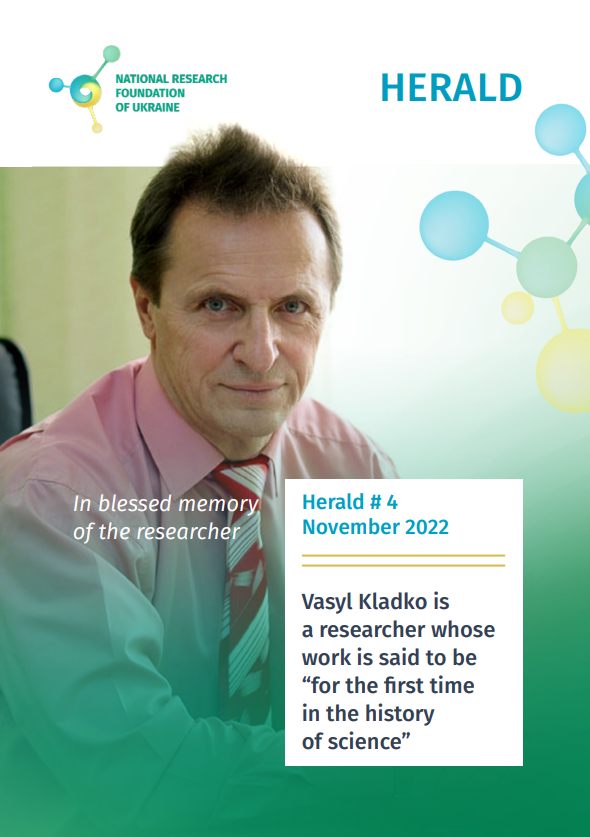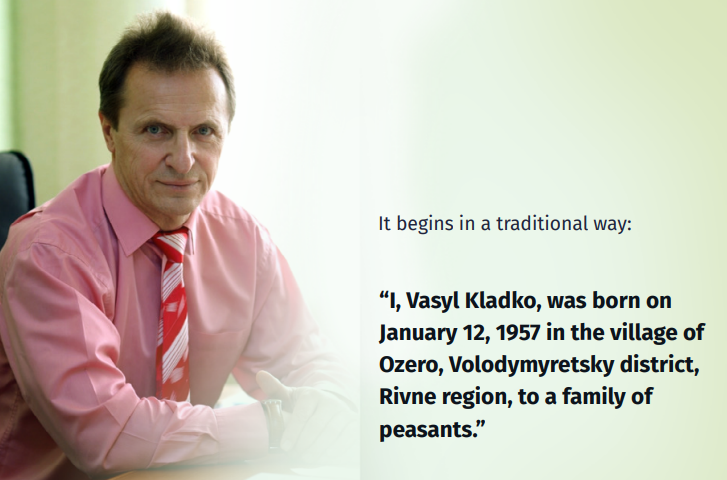
Russian soldiers who invaded Ukraine kill not only on the battlefield. Russian weapons are also directed against civilians: researchers, writers, public activists.
On March 13, in Vorzel, russian invaders shot an expermental physicist Vasyl Kladko, Deputy Director of V.Ye. Lashkaryov Institute of Semiconductor Physics (ISP) of the National Academy of Sciences of Ukraine, a corresponding member of the National Academy of Sciences of Ukraine.
Vasyl Kladko’s name is widely known in the research community. Many lines in his biography begin with the words “for the first time in the history of science”. The scientist authored 458 research papers in leading international and domestic journals, had 5 copyright certificates and 6 patents, was a co-author of nine fundamental monographs.
In 2007, the researcher received the State Award of Ukraine in Science and Technology for his work in the field of development of new materials.
“Vasyl Kladko made a significant contribution to the development of physical and physico-technical foundations for formation of semiconductor nanostructures,” says Viktor Melnyk, Prof. Kladko’s colleague, Acting Director of V.Ye. Lashkaryov Institute of Semiconductor Physics of the NASU. “He was a true patriot and made a lot of efforts to strengthen the defense capability of our country.”
Among the latest directions of Vasyl Kladko’s research and technical activity is research in the field of defense-related topics, in particular development of technology and creation of a site for manufacturing of infrared photoreceptors (IR radiation). This technology makes it possible to implement in Ukraine a closed cycle of IR guidance heads for various types of missiles. The technologies which Vasyl Kladko helped to develop are of great importance for the defense system of our country.
Among the researcher’s achievements is development of a new technique for diagnosing crystals.
It is the most accurate method of all available,” explained Viktor Melnyk. “For comparison: classical electron microscopy can only ‘see’ an atom. And Vasyl Kladko’s method allows to determine the position of atoms and the distance between them. This is a powerful diagnostic, important both for fundamental research and for the development of the newest technologies.
Vasyl Kladko was also the PI of the project “Structural-phase transformations with fractal self-arrangement of vanadium oxide nanocrystals” which the researchers of the institute carried out with the grant funding from the National Research Foundation of Ukraine. We ask Viktor Melnyk: what is the significance of the results of this work?
“This is an extremely interesting project,” replied Professor Melnyk. “Vanadium oxide is a unique crystal that changes its properties when the temperature drops. At 68 degrees Celsius it is a typical semiconductor, and at 66 degrees it is a metal! This ability can be used for manufacture of many devices: light flux regulators, thermal imaging screens (thermal imagers), etc.”
There had been numerous attempts to investigate the reasons for this phenomenon, but still the understanding was not complete. The phenomenon was studied among others at V.Ye. Lashkaryov Institute of Semiconductor Physics of the NASU.
“Vasyl Kladko’s technique helped to better understand the physical processes that take place in crystals”, explained Professor Melnyk. “Thanks to this method, it became possible to develop new technological approaches and improve the quality of the material. By the way, we got the main result (quite unexpected though) thanks to the initiative of young researchers who are on the project team. They took the initiative, conducted additional, unplanned experiments and obtained breakthrough results. This became possible because early-career researcher’s voice is heard at the institute. Vasyl Kladko also contributed to nurturing this ‘corporate culture’. Thus, he has followers!”
At the Institute where Professor Kladko had worked for many years his colleagues even today they cannot accept this loss. They first of all speak about gratitude for the opportunity to work with a world-class researcher for many years and about the intention to continue the joint work.
“People often say that there are no irreplaceable ones. But I don’t agree with that,” says Viktor Melnyk. “Vasyl Kladko is absolutely irreplaceable for our institute (and for each of us). Even today I sometimes rush to say ‘hello’ to Professor Kladko, but then remember that his office is empty.”
Viktor Melnyk met Vasyl Kladko three decades ago. He says that
it is nice to recollect how many ambitious plans and enthusiasm early-career researchers of the institute had. It is also nice to realize that many plans have been implemented.
“Life of a true researcher is about moving forward,” continues Professor Melnyk. “Vasyl Kladko lived that way. For him, science not a means of earning money, but an opportunity to implement the most daring ideas.”
Viktor Melnyk has an autobiography of Professor Kladko signed by the him personally. Along these lines there are tens of years of persistent and driving work, scientific discussions, jokes, achievements.
This simple lines give us a clear picture of the post-war years when the future researcher was a young man working for a collective farm and living a simple life. And, despite all odds, Vasyl left school with honors, later graduated from the Faculty of Physics of Chernivtsi State University with honors, completed his postgraduate studies at the Institute of Semiconductor Physics. He defended his candidate’s thesis (PhD) in 1986, and his doctoral thesis in 2000. In 2007, Vasyl Kladko was awarded the research title of Professor, in 2015 he was elected corresponding member of the National Academy of Sciences of Ukraine.
The researcher’s colleague Natalia Proskurenko recollects his first acquaintance with the institute (where he made the way from a graduate student to a Deputy Director). “It was a usual working day, a graduate student came (he was preparing to defend his thesis), a nice, young guy, a little shy,” says Natalia.
Researchers were happy to welcome the modest and hardworking Vasyl Kladko joining the institute’s graduate program in 1982. Natalia Poroskurenko still remembers heated discussions with his participation. Later, when Vasyl Kladko headed the Department of Structural and Elemental Analysis of Materials and Systems, every colleague could rely on his help, attention to problems and personal involvement in solving them.
Vasyl Kladko was especially attentive to early-career researchers.
“Sparing no effort and time, he explained, discussed, taught. It is not surprising that there were always many young people around the researcher, they argued, joked, and made plans,” Natalia added.
Eleven PhD theses were defended under the supervision of Vasyl Kladko. This is a whole research unit! Vasyl Kladko’s students have become famous scientists working in the leading research institutions worldwide.
By the way, all Vasyl Kladko’s colleagues remember his amazing sense of humor. In particular, he terribly disliked paperwork delays and unprofessionalism.
“We often joked and mentioned the book ‘The Little Golden Calf’ by Ilf and Petrov, where one of the managers instead of signing documents put seals on them: ‘Do not disturb me working’, ‘I am not your night watchman’, ‘Don’t give me a headache’, etc. We wished each other not to turn into such bureaucrats,” Viktor Melnyk recalls with a smile. “And a couple of years ago, my colleagues and I ordered and presented Vasyl Kladko with two seals ‘Do not disturb me working. Kladko’, and ‘I am not your night watchman. Kladko’. He had a good laugh, and sometimes would jokingly put such a seal on a document prepared unprofessionally.
At the end of the conversation, Viktor Melnyk added:
“People tend to say only good things about a person who has passed away. And all good words said about Vasyl Kladko are nothing but sincere truth.”

